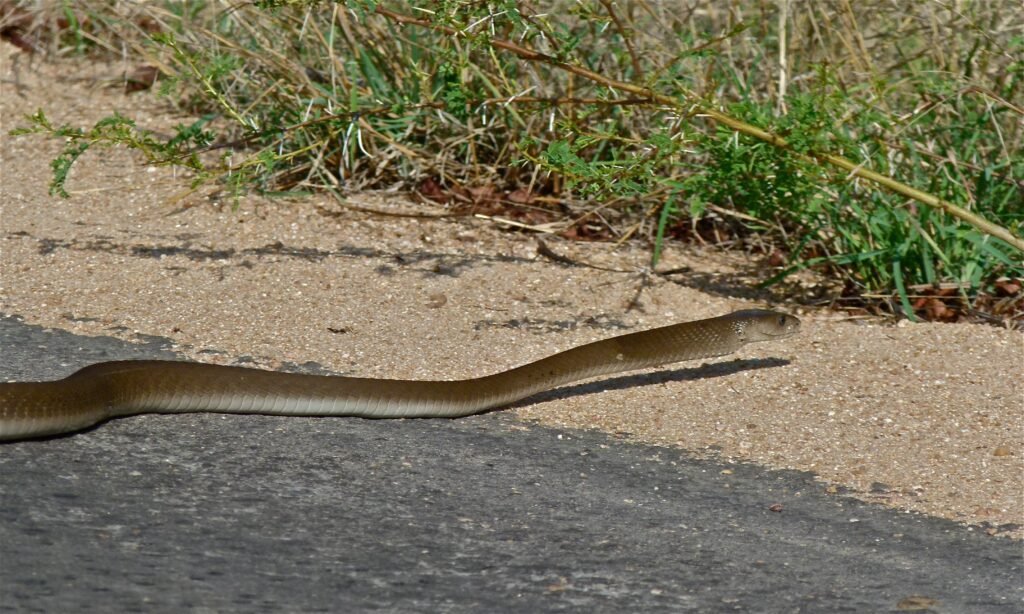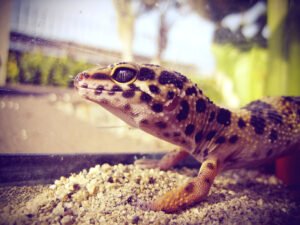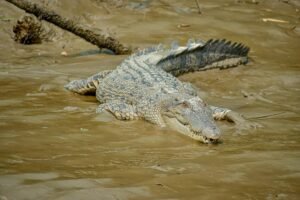All About Black Mamba Snake
Introduction
The black mamba is one of Africa’s most remarkable snakes, both feared and admired for its size, speed, and deadly venom. Scientifically named Dendroaspis polylepis, it is the longest venomous snake in Africa and can grow to over 14 feet in length. Despite its fearsome reputation, the black mamba is generally shy and tries to avoid humans, using its incredible speed to escape danger. Its general body is slender and smooth, covered in grey to olive scales, with a distinctive black mouth that it displays during threatening behaviors. Its remarkable neurotoxic venom attacks the nervous system rapidly, making untreated bites potentially fatal within hours. The black mamba plays a critical role in its ecosystem by controlling populations of small mammals and birds, thus maintaining balance. Common myths exaggerate its aggression, but it typically only attacks when provoked or cornered. People across Africa often respect and fear this snake, blending scientific curiosity with cultural stories.
All About Black Mamba Snake
| Category | Details |
|---|---|
| Snake Name | Black Mamba |
| Scientific Name | Dendroaspis polylepis |
| Wild Life Protection Act (WLPA) Schedule | Not specifically listed under Indian WLPA but globally recognized for protection concerns |
| Regional Names (All Languages) | English: Black Mamba, Hindi: ब्लैक मैम्बा, Marathi: ब्लॅक मांबा, Urdu: بلیک مامبا etc. |
| Physical Description | Long, slender snake, olive to grey-brown coloration, black inside mouth, smooth scales, length 2.2 to 4.3 meters |
| Habitat | Dry woodlands, savanna, rocky hills, termite mounds, lowland forests of sub-Saharan Africa |
| Diet | Small mammals, birds, sometimes reptiles |
| Behaviour | Generally shy and avoids humans, fast-moving, diurnal, aggressive only when threatened or cornered |
| Venomous or Non Venomous | Venomous |
| Venom Type | Neurotoxic venom composed mainly of dendrotoxins and cardiotoxins |
| Venom Effects on Prey | Paralysis of respiratory muscles, rapid immobilization, death within hours |
| Venom Effects on Human | Muscle weakness, blurred vision, respiratory failure, paralysis, often fatal without treatment |
| Common or Rare Species | Common and widespread in suitable habitats across sub-Saharan Africa |
| Life Span | Up to 11 years in the wild |
| Mating and Reproduction | Oviparous, lays 6 to 20 eggs in termite mounds or hidden places, hatchlings independent early on |

Habitat and Distribution
Black mambas inhabit a range of environments mainly across sub-Saharan Africa, including countries like Kenya, South Africa, Zimbabwe, Ethiopia, and others. They prefer moderately dry habitats such as savannas, woodlands, rocky hills, and scrublands but are also found in lowland forests and areas with termite mounds or rock crevices where they can shelter. Unlike many other mambas, which are arboreal (tree-dwelling), the black mamba is largely terrestrial, spending most of its time on the ground but can climb trees swiftly when needed. Their distribution covers a large geographic area but they are rarely found above 1,800 meters altitude. They are diurnal, active during the day, and use their speed to hunt small mammals and birds. Despite being widespread, black mambas seldom tolerate human presence closer than 40 meters, showcasing their shy and elusive nature.
Snake Behaviour
Black mambas are diurnal hunters, relying on speed and agility to catch prey. They feed mainly on small mammals and birds, often striking rapidly several times to inject their potent venom. Their defense mechanism includes a threat display with an open black mouth and a flattened neck hood similar to cobras, alongside loud hissing. When cornered, they can be extremely aggressive. Mating occurs typically in warmer months; females lay eggs in secure sites like termite mounds. Juveniles are independent soon after hatching. The snake’s behavior emphasizes avoidance; they will fast retreat if faced with larger animals or humans unless provoked. Their venom, a fast-acting neurotoxin, paralyzes prey quickly and is also used defensively.
First Aid and Medical Treatment for Black Mamba Bites
If bitten by a black mamba, immediate first aid is crucial. Apply a pressure immobilization bandage starting above the bite site and restrict limb movement to slow venom spread. Keep the victim calm and transport them rapidly to a hospital for antivenom administration. Do not use a tourniquet as this can worsen tissue damage. Medical management includes airway support, mechanical ventilation if needed, and symptomatic care alongside rapid antivenom therapy. Multiple bites are common during an attack; hence quick action is vital. Without proper treatment, bites are often fatal due to respiratory paralysis.
Global Impact of Black Mamba Bites
Black mamba bites contribute significantly to snakebite fatalities in sub-Saharan Africa. Their potent venom causes rapid onset symptoms leading to paralysis and death if untreated. Tens of thousands of bites occur annually, highlighting the importance of medical preparedness and antivenom availability. Despite their feared reputation, black mambas generally avoid humans, and fatal encounters usually happen due to accidental provocation. Efforts in education, medical treatment access, and habitat conservation are vital to mitigating their impact on rural communities.
If You Encounter a Black Mamba on Your Property
- Remain Calm and Assess the Situation: Avoid sudden moves to prevent startling the snake. Observe the snake’s location and behavior carefully.
- Ensure Safety: Keep children and pets away and do not attempt to handle the snake.
- Identify the Snake (If Possible): Without getting close, try to confirm if the snake is a black mamba by noting its size, color, and distinctive black mouth threat display.
- Contact Professional Help: Reach out to local wildlife control or snake removal experts who can safely relocate the snake.
- Prevent Future Encounters: Clear dense brush, seal holes and gaps in buildings, and remove rodent attractants to make your property less inviting.
- Educate Yourself and Others: Learn about local snakes, how to identify venomous species, and first aid measures to ensure preparedness.
Tips for Snake Enthusiasts
Observing snakes like the black mamba safely in the wild involves maintaining a respectful distance and using binoculars or zoom lenses. Avoid cornering or provoking the snake. Aspiring herpetologists should focus on learning snake behavior, habitat needs, and field safety by working with experts and participating in supervised fieldwork. Proper knowledge and equipment are essential for safe study and conservation efforts.
Interesting Facts about Black Mamba
- Black mambas are among the fastest snakes globally, capable of moving up to 20 km/h (12.5 mph), allowing them to escape threats swiftly.
- They can strike at a range covering up to 40% of their body length, meaning a large snake can bite at a considerable distance.
- Despite the name, their skin color varies from olive to grey-brown; the black refers to the inside of their mouth, which they display as a warning.
- They can inject large quantities of venom in one bite, often up to 100 mg but recorded as high as 400 mg, enough to kill multiple humans.
- Black mambas digest their prey fully within 8 to 10 hours, aiding their survival in harsh environments.
- When threatened, the black mamba can lift a third of its body off the ground, spreading a hood similar to cobras, a rare trait among African snakes.
Stay connected with nature and wildlife at WildlifeNest.com – your trusted guide for authentic wildlife information!
You can explore more about these snakes on our website:
| Snake Name | Read More |
|---|---|
| Cobra Snake | Cobra Snake Information |
| Russell’s Viper | Russell’s Viper Snake Info |
| Common Krait | Common Krait Snake Info |
| Saw-scaled Viper | Saw-scaled Viper Info |



